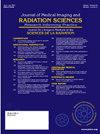当前放射科工作人员对人工智能融入临床实践的看法:系统综述。
IF 1.3
Q3 RADIOLOGY, NUCLEAR MEDICINE & MEDICAL IMAGING
Journal of Medical Imaging and Radiation Sciences
Pub Date : 2024-10-21
DOI:10.1016/j.jmir.2024.101769
引用次数: 0
摘要
导言:人工智能(AI)是将计算机系统应用于传统上由人类完成的任务。通过整合人工智能,医学影像专业经历了一场变革。虽然已经有一些独立的初步研究描述了人工智能的各个方面,但目前的综述采用了一种系统的方法来描述放射科医师和放射技师对将人工智能融入临床实践的看法。本综述从专业角度提供了一个整体视角,以了解人们如何将广泛的人工智能工具视为医学影像实践中的一个单元:本研究采用系统综述的方法,从定量、定性和混合方法的研究中收集数据。纳入标准包括集中于放射技师或放射科医生关于将人工智能纳入医学影像实践的观点的文章。在对各种数据库进行系统检索时采用了逐步检索法。采用多样化设计研究质量评估工具(QATSSD)核对表对纳入的研究进行了质量评估。在讨论阶段,采用平行结果聚合综合法对定性和定量证据进行独立综合,并对结果进行整合:结果:共收录了 41 篇文章,所有文章都采用了横断面研究设计。主要研究结果围绕人工智能教育的考虑因素和观点、对图像质量和辐射剂量的影响、使用人工智能的伦理和医学法律影响、患者的考虑因素和他们认为人工智能对其护理的意义,以及影响开发、实施和工作保障的因素等主题展开。尽管侧重点不同,但这些主题共同为医学影像实践中的人工智能提供了一个全球视角:尽管专业水平各不相同,但放射技师和放射科医生普遍对将人工智能应用于医学影像实践持乐观态度。然而,人工智能教育和知识水平低仍然是一个关键障碍。此外,设备错误、成本、数据安全和操作困难、道德限制、工作调动问题和实施力度不足等都是值得相关方关注的整合挑战。本文章由计算机程序翻译,如有差异,请以英文原文为准。
Current Radiology workforce perspective on the integration of artificial intelligence in clinical practice: A systematic review
Introduction
Artificial Intelligence (AI) represents the application of computer systems to tasks traditionally performed by humans. The medical imaging profession has experienced a transformative shift through the integration of AI. While there have been several independent primary studies describing various aspects of AI, the current review employs a systematic approach towards describing the perspectives of radiologists and radiographers about the integration of AI in clinical practice. This review provides a holistic view from a professional standpoint towards understanding how the broad spectrum of AI tools are perceived as a unit in medical imaging practice.
Methods
The study utilised a systematic review approach to collect data from quantitative, qualitative, and mixed-methods studies. Inclusion criteria encompassed articles concentrating on the viewpoints of either radiographers or radiologists regarding the incorporation of AI in medical imaging practice. A stepwise approach was employed in the systematic search across various databases. The included studies underwent quality assessment using the Quality Assessment Tool for Studies with Diverse Designs (QATSSD) checklist. A parallel-result convergent synthesis approach was employed to independently synthesise qualitative and quantitative evidence and to integrate the findings during the discussion phase.
Results
Forty-one articles were included, all of which employed a cross-sectional study design. The main findings were themed around considerations and perspectives relating to AI education, impact on image quality and radiation dose, ethical and medico-legal implications for the use of AI, patient considerations and their perceived significance of AI for their care, and factors that influence development, implementation and job security. Despite varying emphasis, these themes collectively provide a global perspective on AI in medical imaging practice.
Conclusion
While expertise levels are varied and different, both radiographers and radiologists were generally optimistic about incorporation of AI in medical imaging practice. However, low levels of AI education and knowledge remain a critical barrier. Furthermore, equipment errors, cost, data security and operational difficulties, ethical constraints, job displacement concerns and insufficient implementation efforts are integration challenges that should merit the attention of stakeholders.
求助全文
通过发布文献求助,成功后即可免费获取论文全文。
去求助
来源期刊

Journal of Medical Imaging and Radiation Sciences
RADIOLOGY, NUCLEAR MEDICINE & MEDICAL IMAGING-
CiteScore
2.30
自引率
11.10%
发文量
231
审稿时长
53 days
期刊介绍:
Journal of Medical Imaging and Radiation Sciences is the official peer-reviewed journal of the Canadian Association of Medical Radiation Technologists. This journal is published four times a year and is circulated to approximately 11,000 medical radiation technologists, libraries and radiology departments throughout Canada, the United States and overseas. The Journal publishes articles on recent research, new technology and techniques, professional practices, technologists viewpoints as well as relevant book reviews.
 求助内容:
求助内容: 应助结果提醒方式:
应助结果提醒方式:


